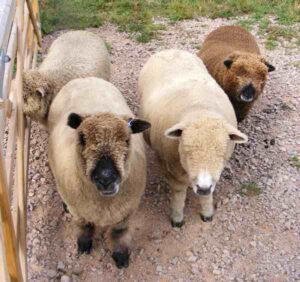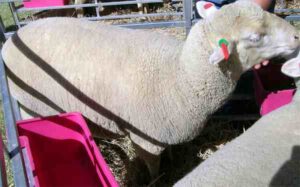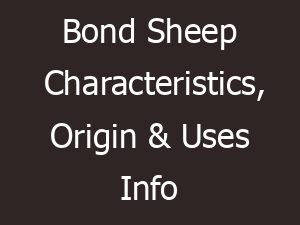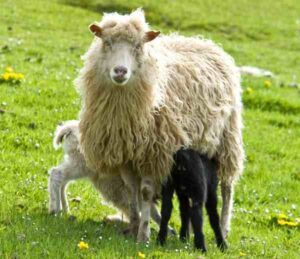The Galway sheep is a breed of domestic sheep from Ireland. It was originated from Galway, in the west of Ireland. And the breed is named from it’s origin place.
It is actually a result of the importation of English Longwools from the late 17th century onwards. The Improved Leicester was exported to Ireland in large numbers from the middle of eighteenth century.
The new breed was known as the Roscommon for many years which was developed, and a Flock Book was established in the year of 1895 (surviving until at least the 1920s).
The Roscommon sheep was actually a large, white faced polled breed. And although the breed was classified as Longwool, it did not have the very long staple characteristics of some sheep breeds, such as the Lincoln and the Leicester Longwool.
A group of breeders in Galway founded the Galway Sheep Breeders Society in 1923, when the Roscommon breed society was ailing. The Galway Sheep Breeders Society was founded at Athenry, Galway.
The society inspected over 200 rams and 6000 ewes, presumably sheep of Roscommon type (admitting 10 percent of these to the new register).
A recording scheme started in 1969, which continues today and it is mainly aimed at improving prolificacy. The scheme was started with the help of the Department of Agriculture and An Foras Taluntais.
Today commercial Galway sheep farming is relatively common in the west of Ireland. The breed is also available in the United Kingdom with approximately 120 mature breeding ewes.
And it is included on the Rare Breeds Survival Trust’s Priority list. However, read some more information about this sheep breed below.
Galway Sheep Characteristics
The Galway sheep are medium to large sized animals with white colored body. Their face is completely white and there are a characteristic bob of wool on the head and wool on the legs.
The outer lips of these animals are of a dark color and dark spots on the ears are common. Both rams and ewes are usually polled. Their nostrils are of dark color and wide.

The rams usually have bold masculine head. Their neck is thick, short and their shoulder is well set. The shoulder is well laid and level and wide at top. Their back is long and level with strong wide loin. Their skin is usually of light pink color. As a medium to large sized animal, average live body weight of the Galway sheep is between 74 and 85 kg. Photo and info from ansi.okstate.edu and Wikipedia.
Temperament
Galway sheep are known for their docile and gentle temperament. They are easy to manage and handle. Their calm temperament makes them suitable for both small-scale and large-scale sheep farming business.
Reproduction
Galway sheep are excellent breeders and they have a high reproductive rate. They generally breed easily if you keep good ratio of male and females in your flock. One mature ram is enough for breeding around or up to 35 ewes. Generally the ewes have a strong maternal instinct and they are known for their excellent mothering abilities. They often give birth to twins or even triplets.
Uses
The Galway sheep is a meat sheep breed. It is raised mainly for meat production.
Special Notes
The Galway sheep are strong and hardy animals. They are well adapted to their native climates. Average litter size of these animals is 1.45 in pedigree flocks, with an average litter size of 1.3.
The fleece of these animals is moderately long, with a fine texture and a broad staple. About 80% of fleeces grade either Super Select (50s/54s) or Pick & Super (54s /56s).
The ewes are good producer of finished lamb when bred pure and are also used for crossing with Down and Continental lambs for producing early lamb.
The rams are good producers of crossbred ewes from hill sheep breeds, and the Galway Greyface (Galway X Blackface) is particularly favored in Ireland.
Today the breed is raised mainly for meat production. However, review full breed profile of the Galway sheep in the following chart.
| Breed Name | Galway |
| Other Name | None |
| Breed Purpose | Mainly meat |
| Special Notes | Very hardy animals, especially well adapted to local climates, good quality fleece, raised mainly for meat, do very well when crossed with other sheep breeds |
| Breed Size | Medium to large |
| Weight | Between 74 and 85 kg. |
| Horns | No |
| Climate Tolerance | Native climates |
| Color | White |
| Rarity | Common |
| Country/Place of Origin | Ireland |






